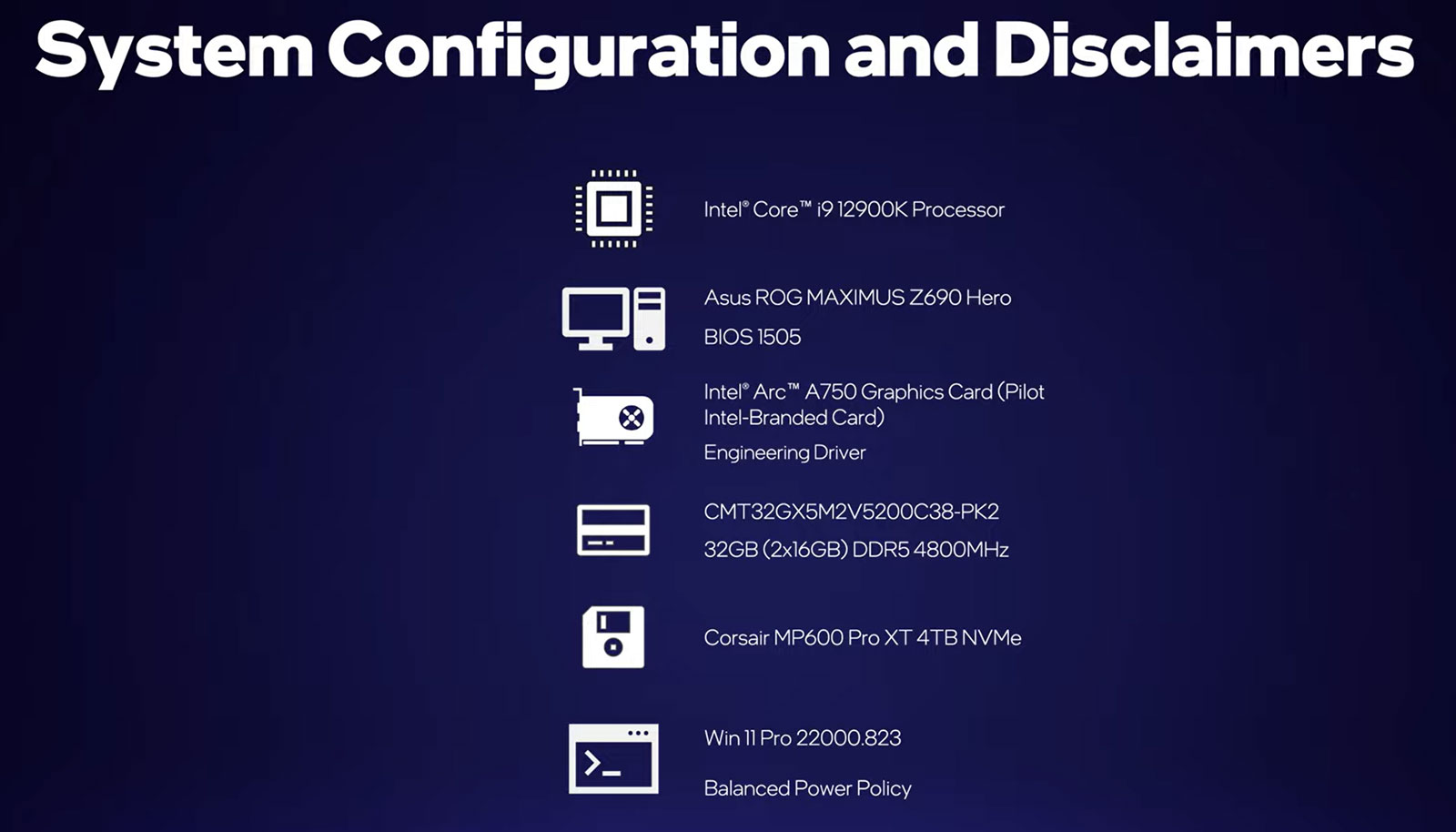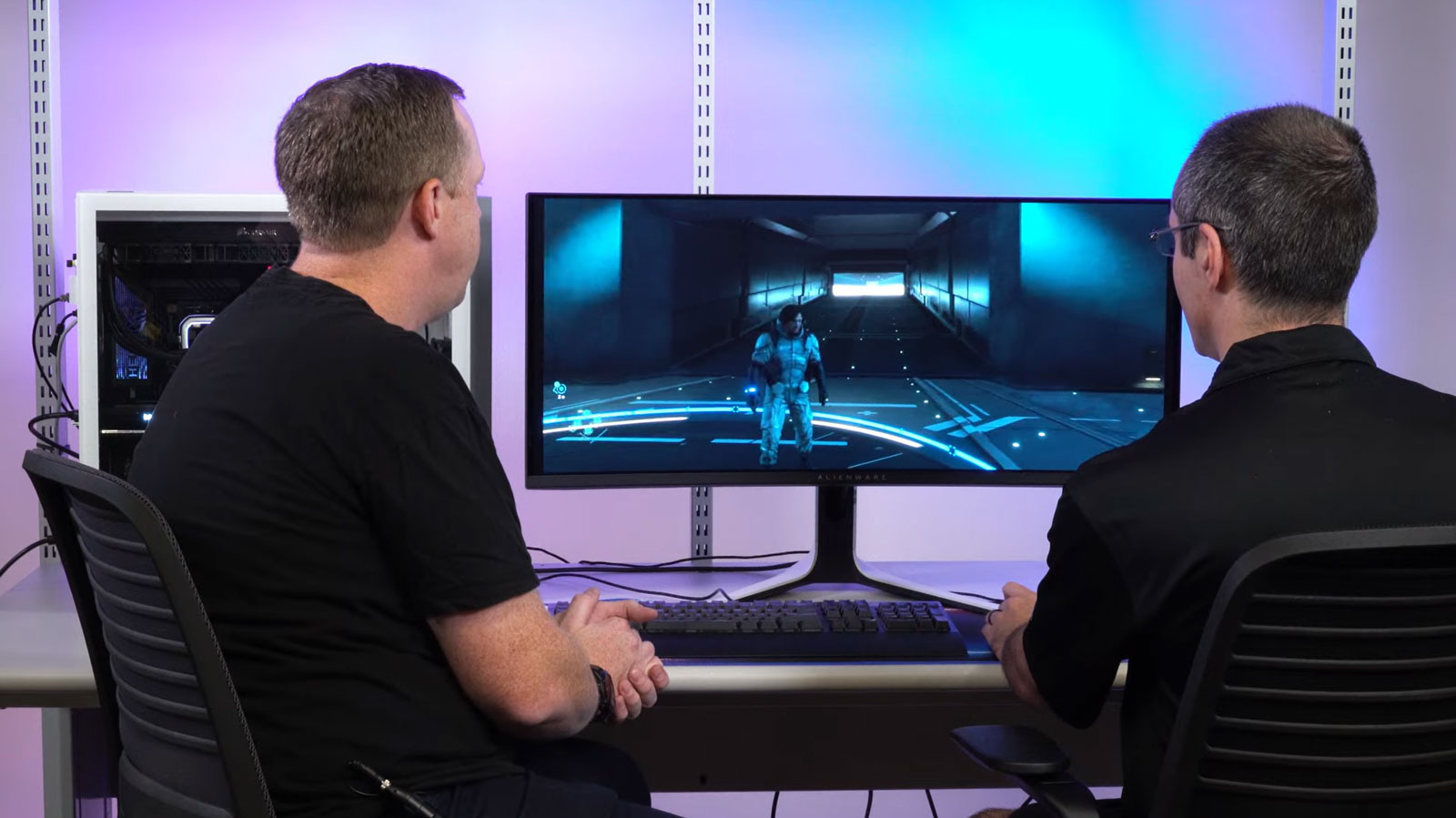Intel Arc A750 Demo: Death Stranding Runs at About 90fps at 1440p
The video also provides information on support for VRR, HDR and HDMI 2.1.
Intel’s Ryan Shrout has returned to extol the virtues of the Arc A750 graphics card. In a short video, we get to see gameplay in Death Stranding at 1440p, another section of the game played on a high-end HDR QD OLED monitor, and some information about HDMI 2.1 support. In the demo, this particular Arc graphics card ran Death Stranding at about 90fps at 1440p.
The first section of the new Intel 'Talking Graphics' video concerned Variable Refresh Rate (VRR) features and performance on Arc GPUs. Shrout fired up Death Stranding on a PC system packing an Intel Arc A750 graphics card. The GPU was connected to a 4K 120Hz monitor from Acer, which supports VRR via DP.
Even though the monitor was 4K (2160p), Shrout played the game at 1440p full screen with VRR on. Shrout explained that the frame rate varied between about 80 and 100fps depending on scene complexity. He then went on to point out that his system had been configured to show the game engine frame rate in the upper left and the monitor refresh rate in the upper right. Due to Adaptive Sync technology in play, these two numbers moved in harmony. Thus poor quality gaming experiences caused by out-of-sync rendering and display (tearing, stuttering) were eliminated.
Is ~90fps at 1440p good performance in this game? Death Stranding isn’t one of our gaming benchmark suite titles, but a quick nose around the internet reveals that it is on a par with GPUs like the GeForce RTX 2070 Super, RTX 3060, or Radeon RX 5700 XT. Those comparison frame rates were achieved at max quality settings, but we aren’t sure about the Arc A750’s game graphics quality selection.
Intel Arc supports VESA Adaptive Sync monitors, which should make it easy to pick from the multitude of monitors out there now which have adopted this spec. However, Intel is going to “go the extra mile” and validate 100+ top-selling VRR monitors for VRR on Arc – so you can have another logo on your monitor box and bezel, as well as some specific assurance of compatibility.
HDR Support
Next up, the Intel Graphics marketing exec talked about HDR support on Arc graphics. Just like on other platforms, users will need an HDR capable monitor as well as their modern HDR supporting GPU. HDR was demoed here, in Death Stranding again, using a sizable Alienware ultra-wide QD OLED screen. It looked like the Alienware AW3423DW Gaming Monitor we reviewed back in April.
HDR gaming action was shown running at 3440×1440, which is the native resolution of the Alienware OLED screen. This monitor can sync from 48-175 Hz, but Intel didn’t share any performance indicating FPS counters in this test.
Get Tom's Hardware's best news and in-depth reviews, straight to your inbox.
Of course it is difficult to demonstrate HDR quality through the medium of Camera > YouTube > your screen, so Intel brought out its ‘HDR Tester Man’ to confirm “that’s like super-bright.”
HDMI 2.1 Support
The Intel branded A-Series GPUs like the A750 and A770 Special Editions will support HDMI 2.1 out of the box. However, it will be left up to partners whether they support greater than HDMI 2.0. Intel said that all that is needed is a PCON chip, to convert the DisplayPort 2.0 to HDMI 2.1, but some OEMs might not go down this route. If HDMI 2.1 support is important to you and you are looking at Intel Arc GPUs with Interest, you can steer your eyes towards the Intel Special Editions or be vigilant in spec checking if the charms of partner cards take your fancy.
No more hints were dropped about launch timing or pricing of the Arc A750. If you wish to know more about Intel’s full range of Arc GPUs, while you wait, please check out our Intel Arc Alchemist: Release Date, Specs, Everything We Know article, which we frequently update.

Mark Tyson is a news editor at Tom's Hardware. He enjoys covering the full breadth of PC tech; from business and semiconductor design to products approaching the edge of reason.


